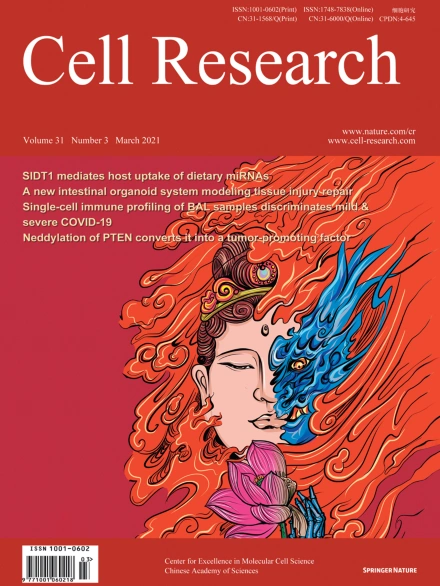
Advanced Search
Submit Manuscript
Advanced Search
Submit Manuscript
Volume 31, No 3, Mar 2021
ISSN: 1001-0602
EISSN: 1748-7838 2018
impact factor 17.848*
(Clarivate Analytics, 2019)
Volume 31 Issue 3, March 2021: 326-344
Single-cell patterning and axis characterization in the murine and human definitive endoderm
Lin-Chen Li1,2,3 , Xin Wang1 , Zi-Ran Xu1,4 , Yan-Chun Wang5 , Ye Feng1,4 , Liu Yang1,2 , Wei-Lin Qiu1,4 , Li Yang1,2 , Xin-Xin Yu1 , Jun Gu3 , Cheng-Ran Xu1,*
1Ministry of Education Key Laboratory of Cell Proliferation and Differentiation, College of Life Sciences; Department of Human Anatomy, Histology, and Embryology, School of Basic Medical Sciences; Peking-Tsinghua Center for Life Sciences, Peking University, Beijing 100871, ChinaDefining the precise regionalization of specified definitive endoderm progenitors is critical for understanding the mechanisms underlying the generation and regeneration of respiratory and digestive organs, yet the patterning of endoderm progenitors remains unresolved, particularly in humans. We performed single-cell RNA sequencing on endoderm cells during the early somitogenesis stages in mice and humans. We developed molecular criteria to define four major endoderm regions (foregut, lip of anterior intestinal portal, midgut, and hindgut) and their developmental pathways. We identified the cell subpopulations in each region and their spatial distributions and characterized key molecular features along the body axes. Dorsal and ventral pancreatic progenitors appear to originate from the midgut population and follow distinct pathways to develop into an identical cell type. Finally, we described the generally conserved endoderm patterning in humans and clear differences in dorsal cell distribution between species. Our study comprehensively defines single-cell endoderm patterning and provides novel insights into the spatiotemporal process that drives establishment of early endoderm domains.
https://doi.org/10.1038/s41422-020-00426-0